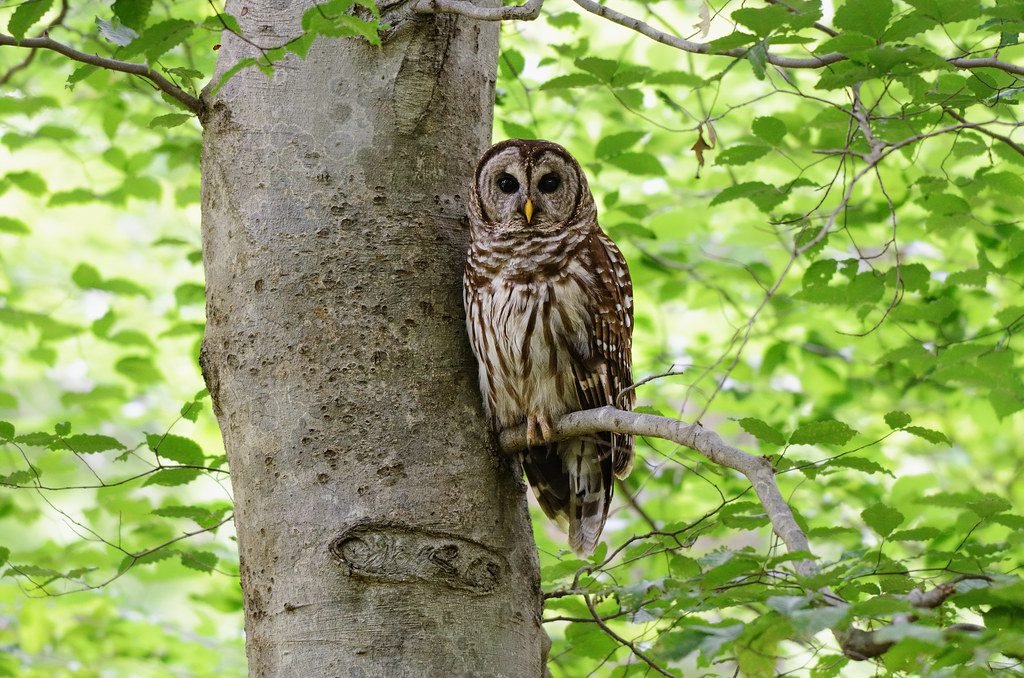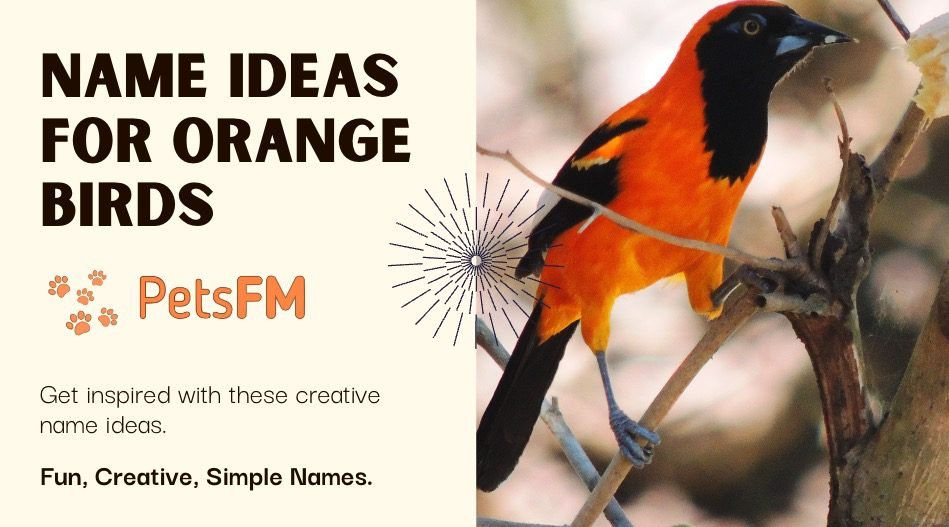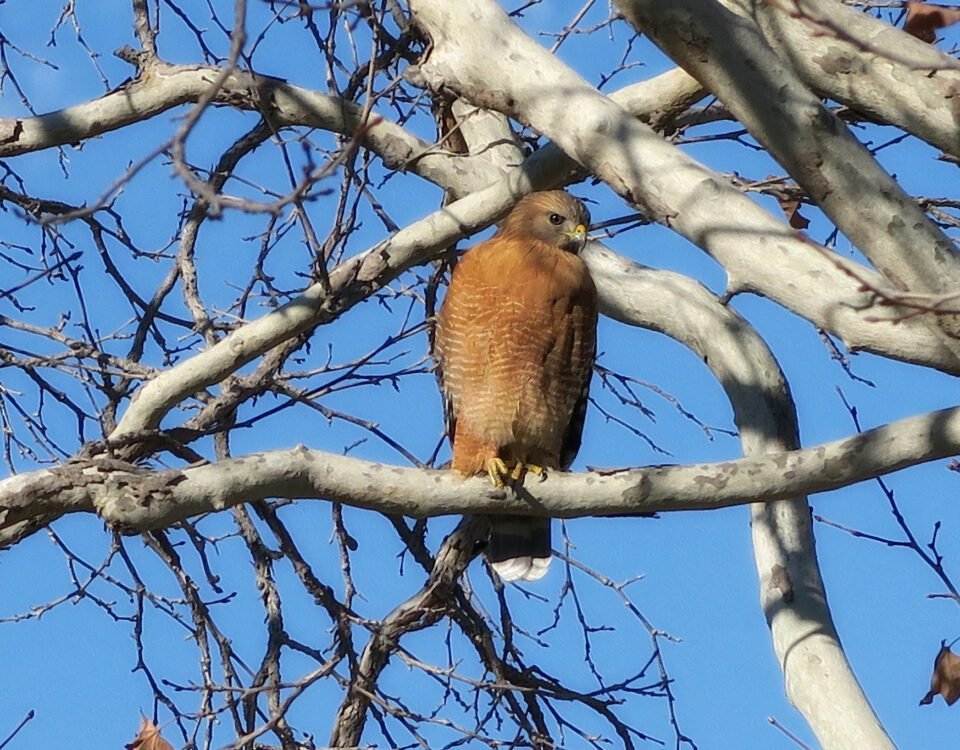


Can Birds Eat Dates? (Which Species + How To Feed)
October 7, 2023![100+ Bird Names In Kannada With Translation in English [UPDATED]](https://petsfm.com/wp-content/uploads/2023/11/Bird-names-in-Kannada-150x150.jpg)
![100+ Bird Names In Kannada With Translation in English [UPDATED]](https://petsfm.com/wp-content/uploads/2023/11/Bird-names-in-Kannada-150x150.jpg)
![100+ Bird Names In Kannada With Translation in English [UPDATED]](https://petsfm.com/wp-content/uploads/2023/11/Bird-names-in-Kannada-150x150.jpg)
100+ Bird Names In Kannada With Translation in English
October 9, 2023Have you ever glanced at the night sky and wondered how our winged friends navigate at night? While humans look for our glasses or flip on night mode on our devices, many birds are out and about, soaring the skies. You might think, “Surely, they can’t see at night.”
Nocturnal birds possess an excellent ability to see in the dark. This advanced night vision allows them to engage in activities like flying, hunting, mating, and nurturing their offspring in low-light conditions.
However, most bird species tend to have their vision optimized for daylight, with their vision becoming significantly limited when night ensues.
Let’s dive further into the intriguing world of birds and their nocturnal vision.
Recommended Reading: Why Are Birds So Loud in Morning and Evening? A Guide
The Anatomy Of A Bird’s Eye
The answer to whether birds can see at night ties with the birds’ eye anatomy.
Birds have both upper and lower eyelids and a unique third eyelid known as the nictitating membrane. They can produce tears, courtesy of the lacrimal and Harderian glands.
Interestingly, birds have relatively large eyeballs compared to their skull size. The interorbital septum, a delicate and wide bony divider, separates these eyes.
If you’re picturing a bird’s eyeball to be round like a mammal, think again. The eyes of nocturnal birds are uniquely designed to operate optimally in minimal light settings, distinguishing them anatomically from the looks of day-active birds.
Birds’ eyes can be categorized into three distinct shapes based on their species: flat, globose, or tubular.


Birds Eye Anatomy
Flat shape: It is characterized by an eye whose width is less than its height. Parrots, typically day-active birds with a slender head profile, often have this eye shape. Though they are active during the day, their visual clarity might not be as sharp as other birds.
Globular Form: This eye shape has an equal width and height. Passerines, known for their broader head, predominantly exhibit this eye structure. Being active during the daytime, their visual precision tends to be superior to birds with flat-shaped eyes.
Tubular Form: It is an eye where the width surpasses its height. This eye configuration is mainly observed in birds of prey. These birds, often active at night, are equipped with a heightened visual clarity, making them especially adept at binocular vision.
Must Read: How Much Is A Peacock Worth? A-Z Guide
Difference Between Nocturnal And Diurnal Birds’ Vision
Nocturnal Birds:


Nocturnal Birds
These birds feature a deep fovea in their eyes, having twice as many cones per square millimeter as humans. However, they predominantly have more rods than cones, enabling them to discern intricate details.
Their eyes are tubular-shaped, which aids them during nighttime. While they don’t detect UV light, they have the tapetum lucidum. This reflective layer boosts the light’s efficiency when passing through the retina. These birds have specialized pathways in their eyes where rods connect to the same low-light circuits cones use.
This lets them detect movements, boundaries, and outlines even when dim. Their eyes glow when photographed or filmed at night, providing exceptional night vision.
Some nocturnal birds include:
- Owls: Known for their large eyes in proportion to their body, they possess binocular vision, aiding in distance estimation.
- Flamingos: Surprisingly active at night, they usually feed in the evenings.
- Kiwi: Despite being nocturnal, they have relatively small eyes and limited eyesight.
- Oilbirds: Active at night, they primarily eat palm oil tree fruits.
- Nightjars and Frogmouths: Night-active and ground-nesting.
- Kakapos: A long-lived nocturnal bird, living over 90 years, in contrast to the African Grey Parrot’s 45-75 years.
- Night Parrot: An elusive Australian native.
- Ashy Storm Petrel: Sea birds that nest on offshore islands.
- Potoo: With their vast eyes, they camouflage well, often hiding in plain sight.
- Swallow-tailed Gull: One of the rare gulls that feed nocturnally.
Diurnal Birds:


Diurnal Birds
Contrasting nocturnal birds, diurnal birds are active during daylight hours and rest at night. Their eyes are adapted for daylight conditions, typically having a rounded or flat shape instead of a tubular.
Examples of diurnal birds include:
- Toucan: Active mainly in the late afternoon and early evening.
- Swallows: Feeds on insects mid-flight from dawn to dusk.
- Heron: Most are crepuscular feeders, active during twilight.
- African Grey: Typically active for 12 hours and then rests for 12.
- Red-Billed Gulls: Recognized by their distinct red features.
- Hummingbird: Daytime feeders, contrasting the nocturnal hummingbird moth.
- Pigeon: Primarily day-active unless disturbed.
- Kingfisher: Predominantly diurnal, except hook-billed kingfishers, which are nocturnal.
- Monk Parrot: Social birds that forage throughout the day.
- Woodpecker: Exclusively day-active, resting at night.
- Hawks: These raptors hunt during the day and are night sleepers.
The Difference Between Monocular And Binocular Vision In Birds
Birds with monocular vision differ significantly from those with binocular vision. Birds with monocular vision typically have their eyes placed on the sides of their heads. This allows each eye to concentrate on distinct objects, granting these birds an expansive visual field. The trade-off, however, is that their ability to measure depth can be somewhat limited.
Conversely, birds with binocular vision have eyes that face forward on their heads. Notably, many birds that hunt at night and raptors fall into this category. This forward-facing configuration offers them the advantage of keenly focusing on distant objects.
Which Bird Has The Best Night Vision?
Undoubtedly, owls sport supreme in night vision because of their elongated, tubular eyes. As raptors, owls possess remarkable binocular vision. This characteristic, stemming from their forward-facing eyes, gives them exceptional depth perception, a feature sharper than in birds like parrots. While many birds have some night vision capabilities, most are better equipped for daytime vision.


Notably, great horned and barn owl species are celebrated for their nocturnal visual prowess. This is primarily attributed to the presence of rods, rather than cones, in their eyes. These rods, sensitive to low light, empower owls with superior vision at night, allowing them to see even in conditions where human vision would falter.
Also, Read: Can a Bird Pop A Hot Air Balloon? Should You Be Worried?
Is It Normal To Spot A Bird At Night?
Yes, certain birds actively venture out at night, and it’s common to notice these birds either in flight or on a hunt. Because of the ample artificial lighting in urban landscapes, from residences, commercial buildings, and vehicles, some birds may extend their activities into post-sunset hours, and these can also be traced resting in tree branches.
Notwithstanding the nocturnal species, sighting birds typically active during the daytime at night is irregular. They are usually encountered during night hours only if they are startled or when a predator disturbs their nest or roosting place.
Engaging in bird observation during nighttime can be a captivating endeavor, even though it has its own hurdles. For instance, your eyes need time to adapt to the darkness. However, identifying birds is still possible by being attentive to their distinctive sounds. If fortunate, you may even witness an owl in the process of capturing its prey.
Editor’s Pick: Why Hummingbirds Are More Active In The Rain? EXPLAINED!
Conclusion
The question of whether birds can see at night has a complex answer. While all birds possess some capability to see in darkness, certain species have developed specialized features that enhance their night vision. Such adaptations are particularly beneficial for those birds that either prey or migrate during nighttime hours.
It’s truly remarkable how these avian creatures are constantly active, regardless of whether it’s day or night – be it flying through the skies, searching for food, or nurturing their offspring. So, the next time you observe these winged wonders outdoors, take a moment to admire their innate beauty and resilience, no matter the time of day.



